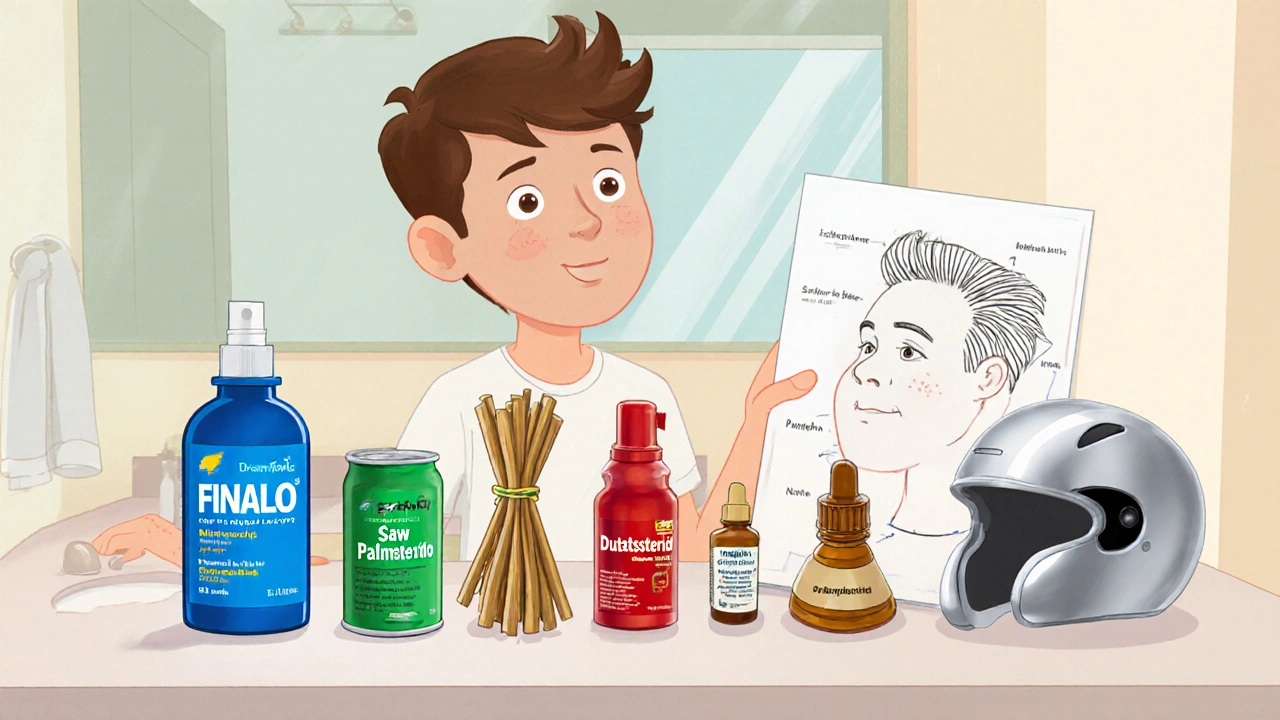Hair Loss Treatment: What Works, What Doesn’t, and How to Choose
When looking at Hair Loss Treatment, a collection of medical, topical, and nutritional strategies designed to slow or reverse hair thinning. Also known as hair loss therapy, it is often the first step for anyone noticing more scalp than before. Hair loss treatment isn’t a one‑size‑fits‑all; it pulls together different tools and science to address the root cause.
Key Players in the Hair Loss Game
One of the most referenced drugs is Minoxidil, an over‑the‑counter topical solution approved for androgenic alopecia. Minoxidil works by widening blood vessels in the scalp, which improves nutrient delivery to hair follicles. Another heavyweight is Finasteride, a prescription pill that blocks the conversion of testosterone to dihydrotestosterone (DHT), the hormone most responsible for shrinking hair follicles in men. Both medications target the hormonal and vascular angles of hair loss, showing that effective treatment often requires a multi‑pronged approach.
Beyond pills and potions, many people turn to Hair Growth Vitamins, nutrient blends that include biotin, vitamin D, zinc, and collagen to support scalp health. While vitamins alone won’t reverse severe pattern baldness, they can fill nutritional gaps that weaken hair strands. Combining vitamins with minoxidil or finasteride creates a supportive environment for regrowth, proving that nutrition is a vital sidekick in the treatment story.
When you map out a hair loss treatment plan, consider three main factors: the type of loss (pattern, alopecia areata, telogen effluvium), the underlying cause (hormonal, nutritional, stress‑related), and the timeframe you’re willing to wait for results. Most clinical studies show visible improvement after 3‑6 months of consistent use, especially with minoxidil and finasteride. Skipping applications or stopping a medication early often resets progress, highlighting the importance of adherence.
Practical tips can make the journey smoother. Apply minoxidil to a clean, dry scalp and let it dry for at least two hours before styling. If you’re prescribed finasteride, take it at the same time each day to keep blood levels steady. Pair both with a balanced diet rich in protein and the mentioned vitamins, and avoid harsh styling practices that pull on fragile strands. Monitoring side effects—such as scalp irritation from minoxidil or decreased libido from finasteride—helps you decide whether to adjust dosage or switch strategies.
The collection below pulls together detailed guides on specific drugs, supplement comparisons, and lifestyle tweaks that complement any hair loss treatment plan. Whether you’re just starting to notice thinning or you’ve tried a few fixes already, the articles ahead give you the facts you need to make an informed choice and stay on track with realistic expectations.

Finalo (Finasteride) vs Other Hair Loss Treatments: Full Comparison
A detailed side‑by‑side comparison of Finalo (finasteride) with minoxidil, dutasteride, hair transplant, and natural alternatives, covering how they work, costs, effectiveness, and how to choose the right option.